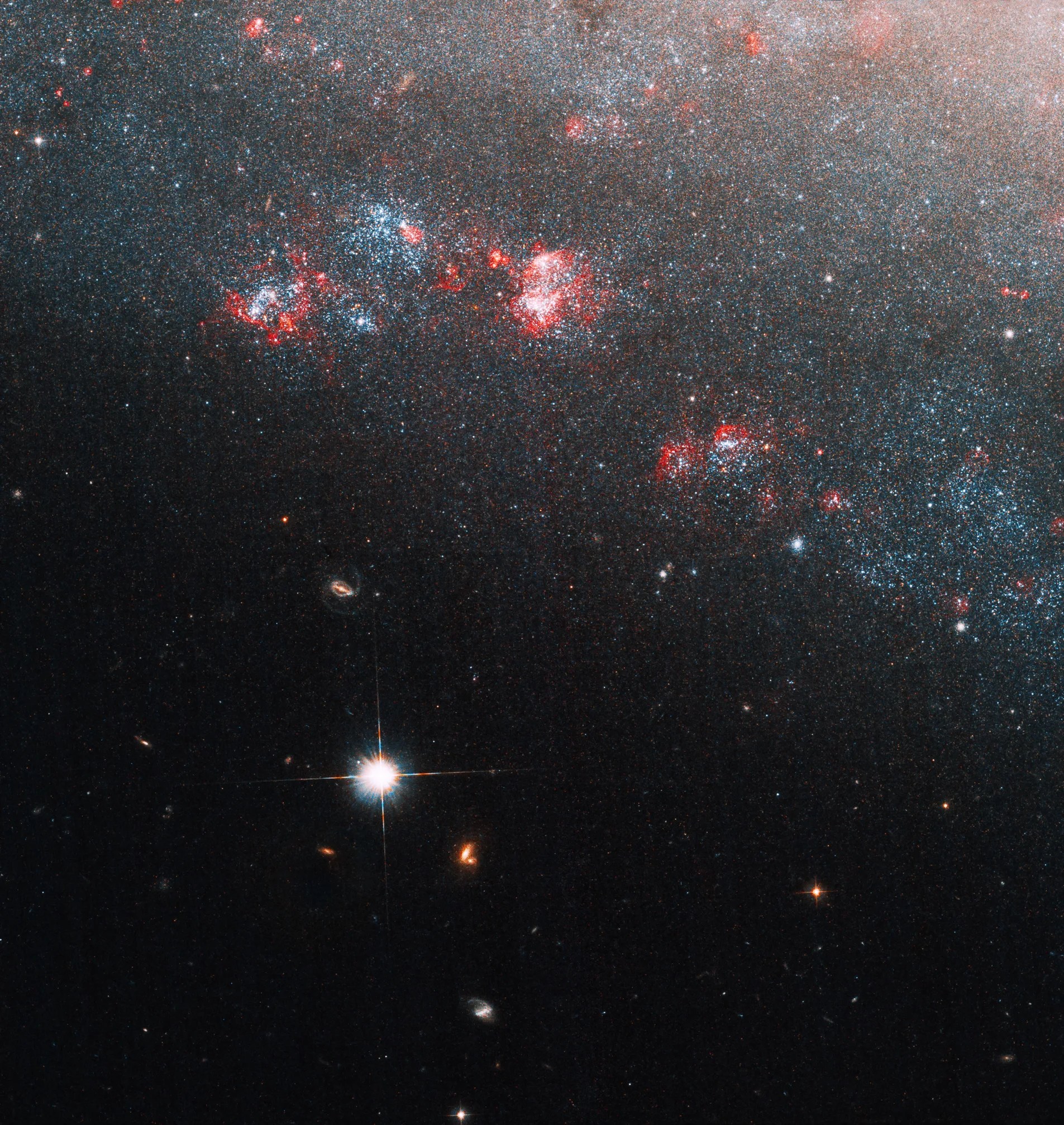2 min read

This NASA Hubble Space Telescope image shows a section of the spiral galaxy nicknamed the Needle’s Eye – an appropriately diminutive name for a dwarf spiral galaxy. The Needle’s Eye, also known as NGC 247 and Caldwell 62, is located about 11 million light-years away in the Sculptor Group – the closest group of galaxies to our own (the Local Group). The galaxy was given its nickname because one end of it features a strange void of stars (not seen in this Hubble close-up).
This image zooms into the very edge of the galaxy, on the opposite side of the void. Below the edge of the galaxy’s disk, smaller and more distant galaxies are visible, as well as a very bright foreground star that lies between us and NGC 247. Bright red indicates areas of high-density gas and dust, and robust star formation rather close to the edge of the galaxy.
The “hole” in Caldwell 62 on the other side of the galaxy is a big mystery. There is a shortage of gas in that part of the galaxy, which means there isn’t much material from which new stars can form. Since star formation has halted in this area, old, faint stars populate the void. Scientists still don’t know how this strange feature formed, but studies hint toward past gravitational interactions with another galaxy.
Caldwell 62 is also home to an object known as an ultraluminous X-ray source. Scientists have long debated the nature of these super-bright X-ray sources. Are they stellar-mass black holes gorging on unusually large amounts of gas? Or are they long-sought “intermediate-mass” black holes, dozens of times more massive than their stellar counterparts but smaller than the monster black holes in the centers of most galaxies? By studying Caldwell 62 in multiple forms of light (visible and infrared using Hubble, and X-rays using the Chandra X-ray Observatory), astronomers have found signs that the X-rays are coming from a disk around an intermediate-mass black hole.
Media Contacts:
Claire Andreoli
NASA's Goddard Space Flight Center
301-286-1940







